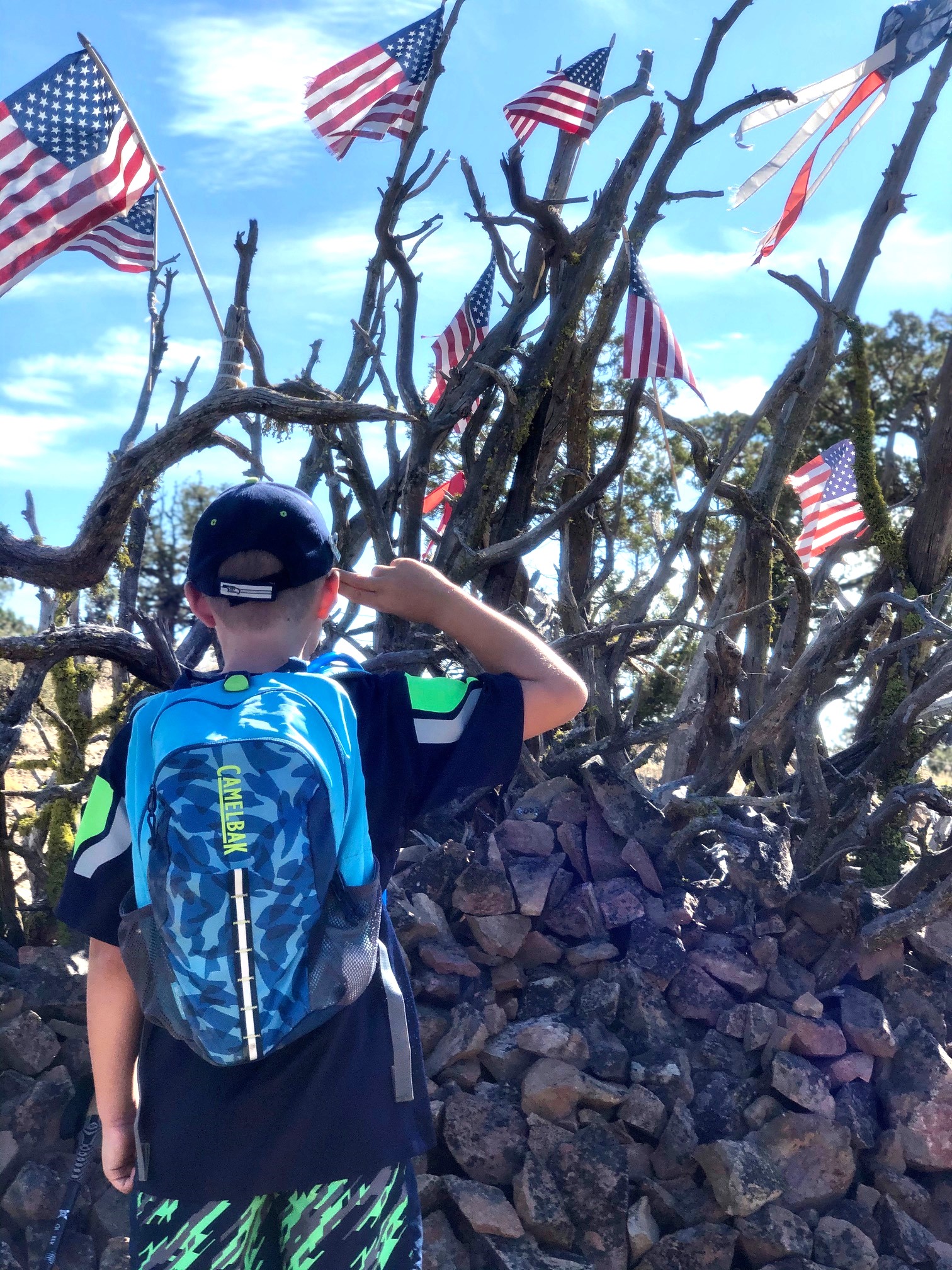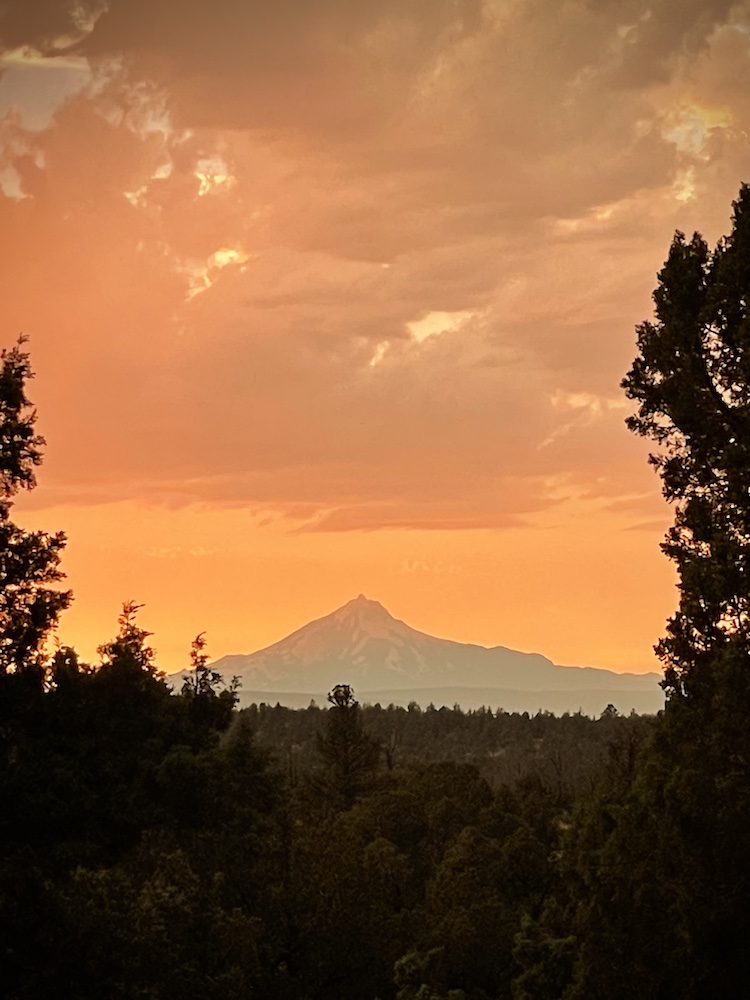
FAQs on the Thornburgh
Resort Development
RECOA owners have asked questions about the Thornburgh Resort development being built near the Ridge at Eagle Crest. This document attempts to answer some basic questions about the development. The process of approving a large development is complicated. This document seeks to provide information rather than opinions. Further questions will surely arise, and this document may be updated as new information arises. If you have additional questions, as time and resources permit, we will provide the answers in a follow up FAQ sheet. Submit questions or comments to the Communication Committee at [email protected].
Thornburgh Resort is a 1,970-acre resort being developed to the south and west of the West Ridge development at Eagle Crest Resort. The current plan states that the resort will consist of 950 lots with 425 overnight lodging units, vacation cabins, three golf courses and resort facilities. The Thornburgh Resort is a destination resort as defined by Deschutes County Zoning Code.
Planning for the Resort began in 2004. In 2008, the proposed development, along with other developments in Central Oregon, slowed due to economic factors.
Deschutes County Board of Commissioners approved a conceptual master plan (CMP) for the resort on May 11, 2006. A map showing the final master plan dated January 22, 2008, is attached. The CMP was appealed to the Oregon Land Use Board of Appeals (LUBA), the Court of Appeals and the Oregon Supreme Court. The CMP was approved in 2009.
The next phase of review required by Deschutes County was the Final Master Plan (FMP) review. The FMP was approved by a county hearings officer on October 8, 2008. Another appellate process followed. The FMP became final on August 21, 2018.
In 2018, the tentative plat application for Phase A-1 was filed and approved by Deschutes County, a decision which has been appealed and is currently pending a decision at LUBA. Thornburgh has obtained final approval of its golf course after completion of appellate review.
The land is currently owned by Central Land and Cattle Company. The person leading the development of the property is Kameron DeLashmutt. Mr. DeLashmutt, who lives in Redmond, acquired the property from his grandparents in 2004, adding further parcels around it between 2004-2006.
The map below has been copied from one of the Thornburgh Resort planning applications. The map has been annotated to highlight the location of the Eagle Crest West Ridge, Cline Falls Highway, Barr Road and a piece of land known as ‘Tax Lot 5300’ that is currently owned by Oregon Department of State Lands, but the Thornburgh resort developers are trying to purchase this land to add it to the resort.
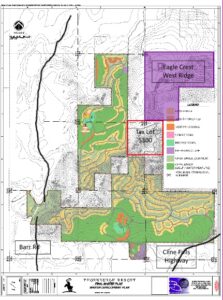
Appeals regarding the golf course and lakes approval have run their course but other tentative plan and site plan approvals have been appealed. Those decisions are pending at LUBA. According to Deschutes County code and procedure, Thornburgh is authorized to construct everything that has been approved at the local level, even though appeals are pending. Construction is therefore actively underway.
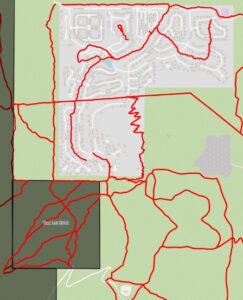
FAQs Continued
Today there is an extensive network of wild, unimproved, and unfenced hiking trails around the Cline Butte Recreational Area, many of which are directly accessible from Eagle Crest. The map below shows the existing trails around the Eagle Crest West Ridge marked in red.
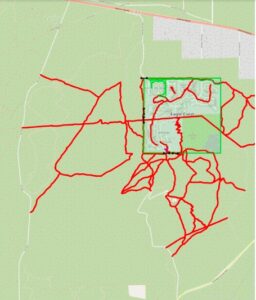
The next map shows the impact of the main Thornburgh development on these trails. The developers have stated that they will create trails within the development, but these will not be the wild, unimproved, and unfenced trails that exist today.
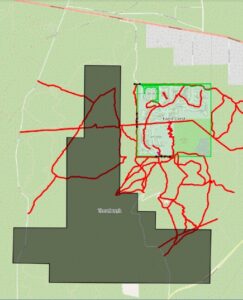
Finally, the map below shows the impact on the trails network if the Thornburgh developers are successful in purchasing g Tax Lot 5300 from the Oregon Department of State Lands (DSL).
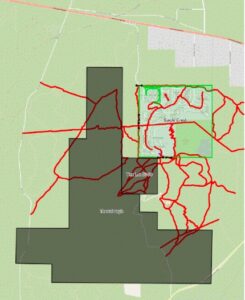
The Thornburgh will include a developed trail system within the resort, but these are expected to be hard surfaced trails. There is currently no commitment on whether they will be accessible to the public.
There have been partial sample surveys of some of the areas to be built over but not all. The construction area is considered to have a medium to high risk of containing indigenous cultural resources. The construction is covered by an “Inadvertent Discovery Plan” which defines procedures to be followed if any construction workers realize that they have encountered cultural resources and report them.
- Climate
- Groundwater pumping
- Irrigation canal piping


- Resort must be located on a site of 160 acres or more
- At least 50% of the site must be dedicated to permanent open space
- At least $7 million must be spent on improvements for on-site developed recreational facilities and visitor-oriented accommodations
- Visitor-oriented accommodations, including meeting rooms, restaurants with seating for 100 persons, and 150 separate rentable units for overnight lodging shall be provided.
The following chart from the original application shows the living units built out in each phase.

Thornburgh has received County approval of a 2.5:1 ratio of single-family homes. The only potential impact of this change as approved is to allow Thornburgh to build fewer overnight lodging units. It should be stressed that the developer may apply to make changes to the FMP at any time and so these numbers are not guaranteed.
Plans call for a second community to be located on the west side of Eagle Crest with access from Eagle Crest Boulevard off Highway 126. This initial access road already exists. This village has approval for a planned residential community comprised of one golf course, a 50-room resort hotel, resort rental area, recreational lake, a lake/boating clubhouse, and individually owned residences. It will include 730 acres of land.
Yes, Thornburgh resort owners and visitors have an easement to share the existing road into Eagle Crest from Highway 126. This road is through BLM land through an agreement that RECOA has. The road is maintained by RECOA today. To date RECOA and the Thornburgh developers have not had discussions about sharing maintenance costs for the shared portion of the road.
The Ridge at Eagle Crest has some 1,750 lots on around 1,200 acres. According to the approved FMP Thornburgh will have some 950 lots on 1,970 acres.
Currently, we do not know. Local Realtors believe that the average price of Thornburgh homes will be higher than that of Eagle Crest homes.
When asked, they aren’t aware that any conversations have occurred. However, they wouldn’t preclude conversations in the future at some point.
According to the Oregon Department of Land website, on July 29, 2022, Mr. Kameron DeLashmutt (developer of Thornburg Resort) withdrew his request for purchase of 6 tax lots, including Tax Lot 5300, adjacent to Eagle Crest Resort West Ridge. He states in his letter “…I am no longer interested in the land at this time. That may change but at the present that is my position.”
While the purchase request has been withdrawn for now it, this does not mean that the 400 acres of DSL land will be left undeveloped. Central Land and Cattle (Thornburgh developer) will continue to lease the tracts. They have another 10 years remaining on their lease. The Thornburgh developer has a Right of Way over these parcels of land and the local DSL Manager has stated that this Right of Way includes
the right to construct roads over the land.
Yes, the Traffic Impact Analysis (TIA) study for Thornburgh Destination Resort was completed in 2005 and is part of the land use permit record. The land use application, which includes the TIA, has been repeatedly appealed and both Oregon Department of Transportation (ODOT) and Deschutes County have not required the TIA to be redone. The TIA indicates a maximum of 517 weekday pm peak hour trips would be generated by the development. The Thornburgh Resort Conceptual Master Plan can be viewed by clicking here. The TIA starts on page 52.
Improvements will be made at US 20/Cook-OB Riley; Thornburgh Resort entrance/Cline Falls; and OR 126/Cline Falls. The developer will be required to construct a left-turn lane for north-bound Cline Falls Highway traffic at the entrance to the Thornburgh Resort. As of this posting (October 2022), the construction plan for the turn lane had not yet been submitted to Deschutes County Road Department.
